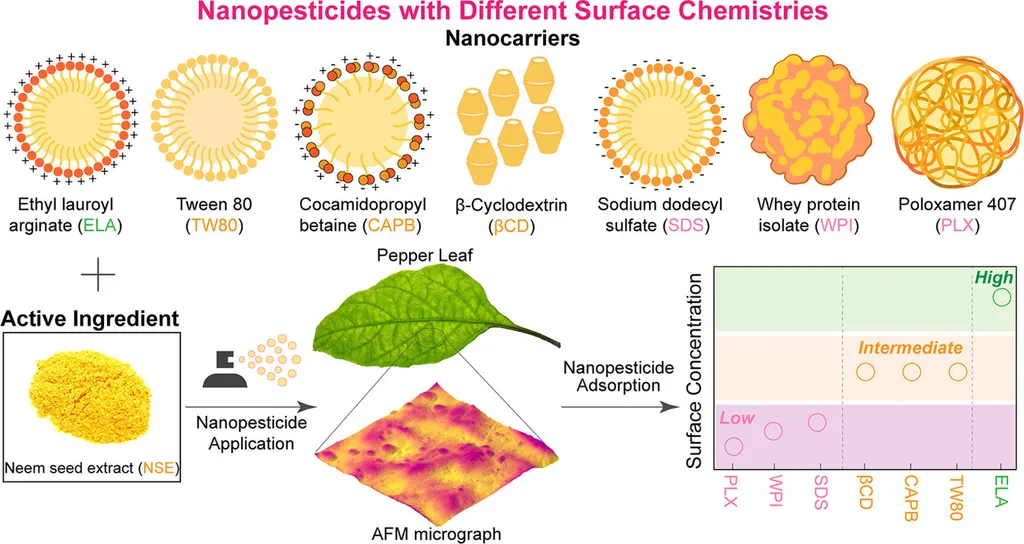In a significant stride towards sustainable agriculture, researchers have developed a novel nano-pesticide delivery system that promises to enhance the efficiency and eco-friendliness of neem-based biopesticides. The study, published in the journal *Chemical and Biological Technologies in Agriculture*, introduces a modified biogenic graphene oxide–mesoporous silica hybrid nanoparticle (GO–MSNs) designed for the slow release of Azadirachtin (Aza), a natural pesticide derived from neem seeds.
The research, led by Farzaneh Jokarshourijeh from the Department of Nanotechnology at the Agricultural Biotechnology Research Institute of Iran (ABRII), focuses on creating a reliable and efficient nano-pesticide delivery system (nano-PDS). This innovation addresses the challenges of conventional pesticide application, such as rapid degradation and environmental contamination.
The team synthesized the GO–MSN-based nanocarrier using rice husk-derived silica and graphene precursors, followed by surface modification to obtain propyl amine-functionalized GO–MSNs. This modification was crucial for improving the loading efficiency and slow-release profile of Aza. “The interaction between Aza and the amine functional groups in the nano-PDS led to a more efficient slow-release profile compared to the bare GO–MSNs nanocarrier,” Jokarshourijeh explained.
The nanostructure and porosity of the synthesized nanocarrier were thoroughly characterized using advanced techniques such as X-ray diffraction (XRD), electron microscopy (SEM and TEM), thermogravimetric analysis (TGA), and surface area and pore analysis using the Brunauer–Emmett–Teller (BET) and Barrett–Joyner–Halenda (BJH) theories. The loading efficiency was found to depend on various nanocarrier characteristics, including surface area, pore size, functional group, and surface charge.
One of the key findings of the study is the potential of the organically modified biogenic GO–MSNs to offer a promising solution for the slow release and improved efficiency of Aza-based nanobiopesticides. This could significantly enhance the control of pests like the silverleaf whitefly (Bemisia tabaci), a major agricultural pest that causes substantial crop damage.
The commercial implications of this research are substantial. By improving the efficiency and sustainability of biopesticides, farmers can reduce their reliance on synthetic chemicals, leading to healthier crops and a cleaner environment. The slow-release mechanism also ensures that the pesticide remains effective for longer periods, reducing the frequency of application and associated costs.
“This research opens up new avenues for the development of eco-friendly and efficient pesticide delivery systems,” Jokarshourijeh noted. “The potential applications extend beyond neem-based pesticides, offering a versatile platform for various agricultural and environmental applications.”
The study’s findings could shape future developments in the field of agritech, driving innovation towards more sustainable and effective pest management solutions. As the agricultural sector continues to seek greener alternatives, the integration of nanotechnology in pesticide delivery systems represents a significant step forward.
The research, published in *Chemical and Biological Technologies in Agriculture*, underscores the importance of interdisciplinary collaboration in addressing global agricultural challenges. With the growing demand for sustainable farming practices, this breakthrough could pave the way for a new era of eco-friendly pest control, benefiting farmers, consumers, and the environment alike.

